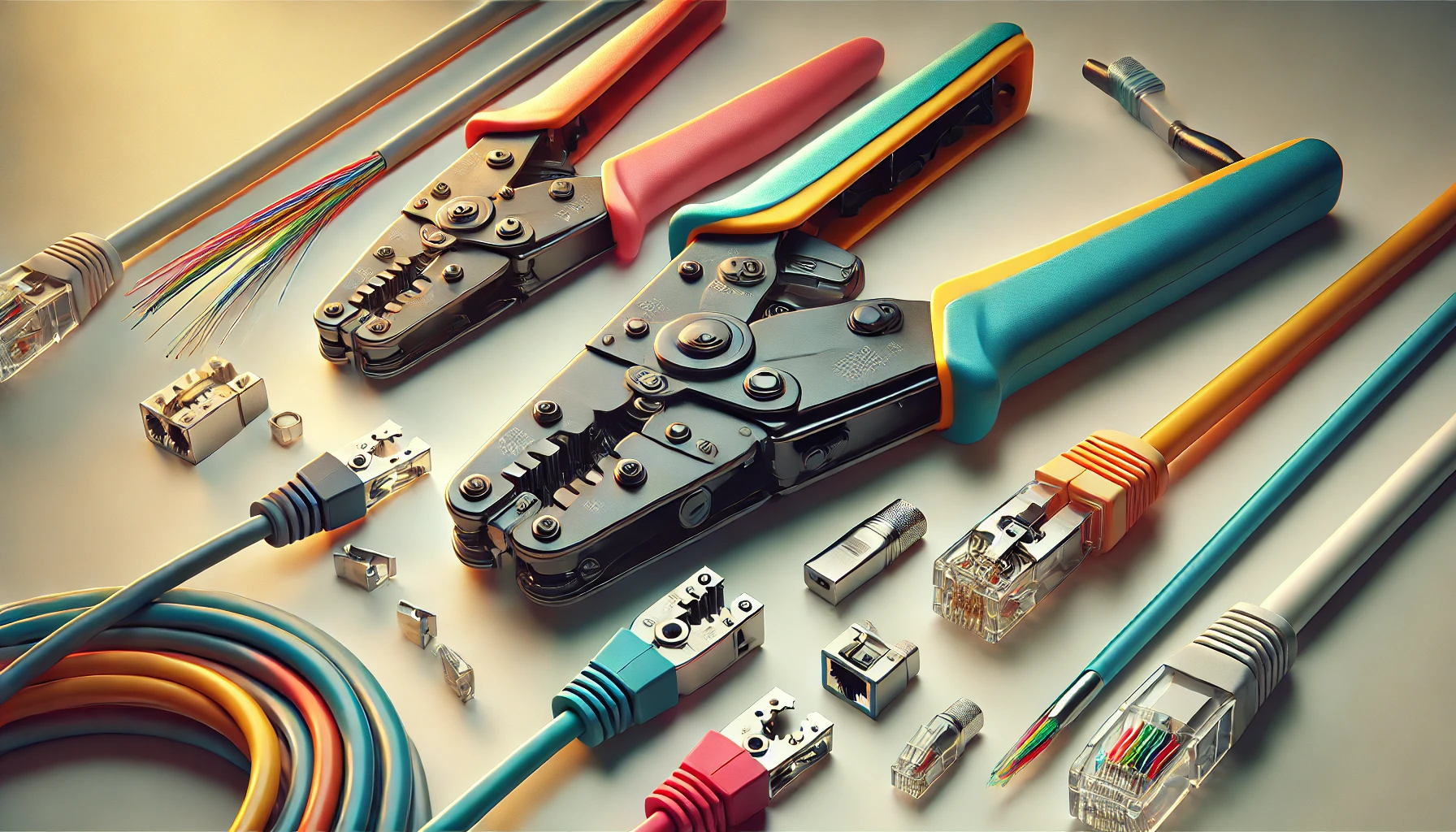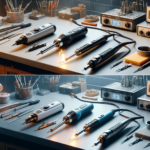
Introduction
Crimping is of significant importance in electronics and electrical work, where a wire is securely joined to a connector or terminal. However, the effectiveness of this process largely depends on the precision and quality of the tools used—crimp tools. These versatile, handheld devices are pivotal in creating secure and reliable connections between wires and connectors, ensuring electrical systems function efficiently and safely. This article covers how crimp tools can achieve precise crimps in various applications, exploring their types, significance, and versatility across various sectors.
Understanding Crimping: The Importance of Crimping with Precision
Crimping refers to the process of joining a wire to a connector or terminal by compressing a metal sleeve around the wire. It creates a secure and reliable connection and is known for its simplicity, speed, and effectiveness. A good crimp ensures low electrical resistance, high pull-out strength, and a durable connection.
Precision crimping is prominent in ensuring the integrity and performance of the connection. A poorly executed crimp can lead to several issues, such as increased electrical resistance, mechanical connection weakness, and safety hazards. Crimping is also vital in enabling the connections to withstand environmental factors, such as vibrations and temperature variations, improving the overall performance and longevity of electrical systems.
What are Crimp Tools? A Brief Introduction to Their Functions and Applications
Crimp tools are specialised hand tools designed to create a secure, conductive connection between a wire and a terminal or connector. These precision tools apply the correct amount of pressure to the materials and are simple to use. They work by deforming one or both of the materials to hold each other firmly. A crimp tool is indispensable in electrical work, from small-scale projects like DIY home wiring to large-scale industrial applications, ensuring the connections remain stable and reliable under various conditions. Additionally, crimpers come in multiple shapes and sizes, depending on the specific application.
Popular Types of Crimp Tools: Finding the Right Fit
Crimping tools are classified into various types based on their operating mechanism and power source. They come in standard individual tools or crimp tool sets for different needs. Some common types of crimp tools include:
Manual Crimp Tools
Also called handheld crimp tools, manual models are the most common type of crimpers designed for use with a variety of connectors and terminals. They come in different styles, such as crimping pliers and versatile tools with interchangeable dies. These pliers are ideal for general-purpose crimping tasks in various applications.
Another popular style is a ratchet crimp tool equipped with a ratchet mechanism. They ensure that consistent pressure is applied during crimping and are suitable for achieving uniform crimps in professional settings.
Hydraulic Crimp Tools
Hydraulic crimp tools are heavy-duty crimping tools that apply force using hydraulic pressure. They are often used in situations requiring high force, such as crimping large connectors and cables.
Pneumatic Crimp Tools
Pneumatic crimp tools operate using compressed air designed for high-speed, high-volume crimping tasks. These crimpers are commonly used in industrial environments where efficiency and speed are crucial.
Automatic Crimp Machines
As the name suggests, automatic crimp machines can perform crimping operations automatically and are used for mass production. However, these machines feature feeders and are programmed to handle large volumes of crimping tasks efficiently.
Electric Crimp Tools
Unlike battery-operated crimp tools, electric crimpers get power from electricity and offer robust precision and speed. These electrical tools are commonly used in environments where large volumes of crimps are required, such as in mass production settings.
Avoiding Common Crimping Mistakes Can Enhance Tools’ Precision
Crimping involves compressing or squeezing materials together. While seemingly simple, improper crimping can lead to suboptimal performance, reduced tool lifespan, and even safety hazards. Professionals and DIYers can significantly enhance the precision, reliability, and longevity of their tools by avoiding the common crimping mistakes, such as:
- Using the Wrong Tool – Using an incompatible tool with the connector or wire gauge can lead to poor crimping results. Always use the correct tool for the job.
- Over-Crimping – Excessive pressure on crimping tools, such as wire crimpers, can damage the connector or wire, leading to weak connections. Apply enough pressure to achieve a secure crimp.
- Improper Wire Stripping – Incorrectly stripped wires can result in poor electrical contact and unreliable connections. Strip the wire to the appropriate length and avoid nicking the conductor.
Common Applications of Crimp Tools Explained
Precision crimp tools are versatile handheld devices widely used to join materials or components by pressing them together and creating a seal or crimp. Their versatile functionality spans across various sectors and applications, such as:
- Electrical Work – Crimp tools are essential for securely connecting wires together or to terminals, attaching various connectors (such as plugs, sockets, and switches to wires), and terminating cables.
- Automotive Industry – Crimpers are employed in the automotive sector to assemble wiring harnesses for cars, trucks, and other vehicles. Moreover, they can connect battery terminals to cables and sensors to the vehicle’s electrical system.
- Manufacturing – Manufacturing facilities require quality crimps to assemble multiple components, create connections, and fasten parts together securely.
- Telecommunications – In telecommunications, these hand tools are used to terminate network cables for various network connections and to connect fiber optic cables to devices.
Summary: Crimping with Confidence
Crimping is a fundamental process in many electrical and electronic applications. Whether you’re a hobbyist or a professional, investing in the right crimp tools and using them correctly will pay off in the form of durable, high-quality connections. Remember to avoid crimping mistakes like using incorrect crimping dies and applying insufficient or excessive force to achieve precise and reliable crimps every time.





















